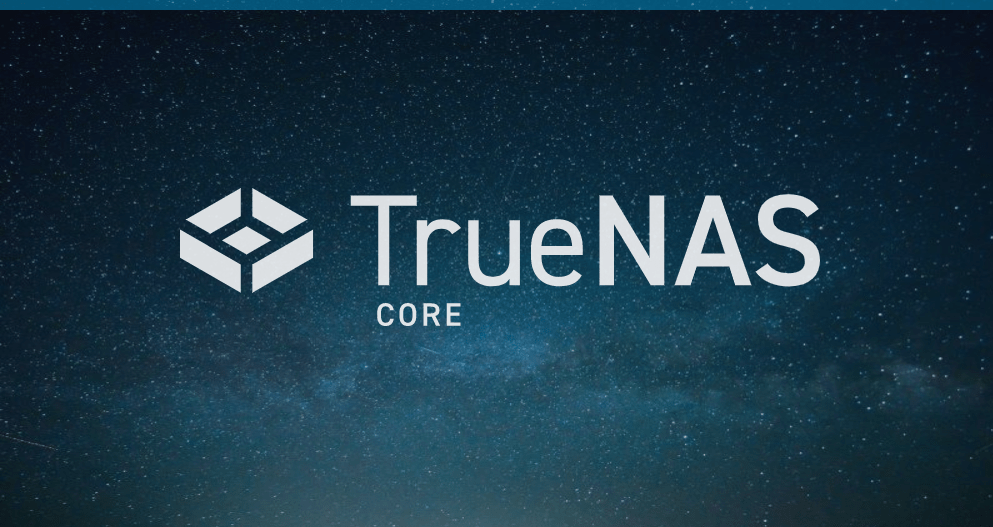Sep 1, 2024 | FreeNAS, IT, TrueNAS |
This blog is a bit of a con, as I drafted it to post on the iXsystems forum in the hope that I might get some ideas about what to do with my TrueNAS server. I’ve posted it below, but I still haven’t added it to the forum!
I loved FreeNAS, and since first installing it over ten years ago, I have learned so much about hosting and maintaining my own micro data centre, much of it from the old forums.
The death of the old forum and the focus on TrueNAS Scale have been quite disheartening, and I don’t know where I go from here. Obviously, everything is still working, so I don’t have to make any immediate decisions, but I feel I should at least be thinking about what the future holds and how I might get there.
I was hoping that if I described how I was currently using TrueNAS Core, I might gain some of the forum’s incredible wisdom to help reinvigorate my love for all things Free to TrueNAS.
For background, I started this journey running an HP N40L Microserver and about 8TB of RAW storage. That was upgraded to an NL54 and 16TB, and then I built my own server in a Fractal Define R5 case with an Intel Xeon E3 and Supermicro motherboard, ECC RAM and 36TB storage. See, I was paying attention! This was upgraded about 4 years ago using the same case, an updated Xeon and Supermicro motherboard, 64GB ECC RAM and 64TB storage, with some SSDs for jails and VMs. I still have the old one and replicate to it monthly (it used to run 24×7 until the cost of electricity went through the roof), so I have something I could play around with using Scale.
Obviously, my main use is storage. I have two pools. This main pool is 8x8TB RAIDZ2 WD HDD which is currently running about 75% (I know, too high really but I was considering upgrading the 8TB drives to 16TB over a few months). The second pool is 2x1TB Mirror Crucial SSD which is currently running about 65%. The main pool is predominantly long-term storage, and the second pool is for the jails and VMs and associated databases.
I know Scale will do all the storage stuff, so that’s not my worry. I’m worried about the jails and virtual machine I have running lots of externally facing services accessed through NGINX Proxy Manager, now running on a separate Raspberry Pi (it was running in a jail for a few years)
I have six jails of varying degrees of importance. My Nextcloud jail is probably the most important and is used by family and a small charity I was a Trustee for. The files and database are in separate datasets, and I know this could be run on Scale, but moving it and breaking it scares me! I also have an emby jail used by around 15 family members and friends. It has the emby_server folder mounted to a separate dataset, so again moving should be possible. I’m assuming it is possible to mount datasets into containers or VMs similarly to jails, but not whether the structure of these will be the same cross-platform? I also have a WordPress jail, which used to run my company website, but it’s now just my personal blog. It’s a similar set-up with a dataset stored outside the jail. I have three other jails running OpenVPN (so I can connect back to my network remotely), Limesurvey (running small surveys, which could be lost) and Airsonic (an old music streaming service, which has pretty much been replaced by emby).
I then have some VMs. The first one I created, running Ubuntu 20.4, was to play around with Docker. I’m still no expert, but I have become quite dependent on this VM as it is running Bitwarden, Teslamate, Calibre-web and a test instance of WordPress (for playing with new plugins and themes). It does have some mount points to a Docker dataset with more permanent storage, but it’s not as consistent as I’d like. It became a little unwieldy at one point, as I was also trying to run other things, so eventually, some of these got moved to their own VMs. I have an Ubuntu VM just running ONLYOFFICE Document Server, which is linked to the Nextcloud service for an Office 365-type experience. I have another Ubuntu VM running Pi-Hole and another running Mattermost, although this is still pretty much a playground and not used in anger, so I wouldn’t be too upset to lose it. The last one is a ubuntu 22.4 VM running CrashPlan, which backs up any irreplaceable data in the cloud.
Having learnt to set all this up and maintain it for the last 7-8 years gives me hope to learn the necessary skills to do it all over again. My only worry is this time I have data I don’t want to lose, and services I’d be devastated to have to start again from scratch, which I didn’t have when I started my FreeNAS > TrueNAS journey. I know ownCloud was rebuilt a few times, as was emby, before iocage allowed jails to be upgraded after the version of FreeBSD was!
Jan 1, 2021 | Docker, FreeNAS, IT, Server, TrueNAS, WordPress |
Although this is going to be similar to my New Year update at the beginning of 2020, this New Year TrueNAS update feels very different!
I’ve been working from home since March 2020 and for at least some of the year had a little more time to play around with things.
Similar to the beginning of 2020, I start 2021 with most things up to date. Midway through December, I upgraded my FreeNAS machines to the latest version of TrueNAS Core, which I blogged about here. Although there were a few bumps, everything has been running well since, and I’ve also upgraded all of the jails without too many issues.
FreeNAS0 has performed fantastically during 2020, and while I did have an issue with one of the HDD in the pool. it was replaced with the cold-spare and the RMA process with WD worked flawlessly, which I blogged about briefly here.
I also replaced my UPS during 2020, although this was a simple return process through Amazon and an identical replacement from eBuyer. The old one had been shutting down randomly, which kind of defeats the object, and Amazon’s solution was to return it for a full refund. They couldn’t provide a replacement, so I picked one up from eBuyer, saving about £30 and that’s run 24×7 since it was switched on, as you’d expect from a UPS.
From a VM perspective, very little has changed. I still have Ubuntu VMs running ONLYOFFICE, CrashPlan and Docker, although I have a new one configured with Docker just for running Pi-hole. I also had a VM running NGINX Proxy Manager although that’s been moved across to my Hass.io Raspberry Pi now.
I still have a couple of VMs for playing with Windows and TrueNAS, although they spend most of the time switched off. Other than a couple of sharing issues, which were easily resolved, the TrueNAS update for the VMs was excellent.
In terms of the iocage jails, here’s an update on those, in ‘jail-name’ alphabetical order:
Airsonic
This is a new one from last year which I built in June and blogged about here. Given I’ve spent most of 2020 at home, it’s not really been all that useful but I imagine I will use it a little more when things start to return back to the new normal.
emby
emby is still my media server and there’s no going back to Plex. It’s running 4.5.3.0, which is the latest stable release.
MediaWiki
Another new one, which I’ve blogged about a few times in 2020. I’m not really using it for anything, but hope to find something at some point.
Nextcloud
This is probably the jail I’d be most lost without, although the WordPress one might put up a strong case. I use this for syncing files across all of my devices (iMac, MacBook, iPhones, etc.) but also for accessing files remotely when I’m not on my own devices. The integration with ONLYOFFICE just adds the cherry on top! I’m up to date running the latest 20.0.4, PHP 7.4.13 and can only see my use of this continuing to grow in 2021.
(Lime)Survey
This was my newest jail last year and has been used again this year to run a couple of small surveys for my daughters Out Of School Club again. It’s updated less regularly now as I tend to do it manually rather than paying for the privilege of using the built-in Comfort updater. It takes a little longer but is saving me £80-90 a year.
(Open)VPN
Still working well for connecting back into my network securely whilst away from home, although again it’s had less use this year given I’ve spent most of my time at home! Having just upgraded all of my jails with TrueNAS, it’s also surprisingly up to date running 2.4.9.
WordPress
As with last year, I’ve still got the same WordPress jail for my company website and this blog, and a Docker container running another version of testing. They are both up to date running 5.6, although my test instance is a little behind on PHP 7.3.12 while the live system is running 7.4.13.
And that’s it, so a few haven’t made it to the end of 2020!
I replaced the SSL Proxy jail in June when I was running NGINX Proxy Manager in a small VM. Around October this move to my Hass.io Raspberry Pi. It’s a much cleaner tool for managing this, but I’m glad I ran things manually for a little while and have some understanding about what this is doing in the background. I moved all the old config and deleted the jail, but I can’t imagine ever going back to doing things manually.
The Home Assistant jail was moved to a Raspberry Pi as there’s so much more functionality available running Hass.io and Home Assistant Core than you can via the virtual python environment used to power things on FreeBSD. I didn’t blog about this at the time, but I perhaps will sometime this year as I really need to move the OS onto an SSD rather than the default micro SD card.
I switched to running Calibe-web in a Docker container almost straight after my 2020 update, which I blogged about here. It’s so much better and is running the latest 0.6.9 version. I still have the calibre jail, although it’s switched off and is another one to delete this year.
And lastly, my DNS jail. This was replaced with a VM running Pi-hole in February and has again proved to be a much nicer solution.
So as with 2020, almost everything is up-to-date and running well, and in many cases better than it was 12 months ago. I still have over 18TB of storage capacity on FreeNAS0 and the jail SSDs are still running less than 50% capacity. FreeNAS1 on the other hand is approaching 80%, although given that’s really just a backup target, I don’t think I need to worry about that limit. So long as I don’t hit 100% everything should be fine, and I can always be a little more selective about what I backup. At some point, I will replace the 4TB drives with 8TB drives from FreeNAS0, but I shouldn’t need to do that this year.
Anyway, that was my New Year TrueNAS update! Have a prosperous New Year and hopefully, 2021 will be a much more normal year. If you didn’t get around to playing with FreeNAS in 2020, makes 2021 one to check out TrueNAS…


Dec 14, 2020 | FreeNAS, IT, TrueNAS |
A major FreeNAS upgrade to TrueNAS has been on the cards for most of 2020. TrueNAS 12.0 was released in October, but I’ve waited until the first U1 release before attempting my FreeNAS upgrade. How did it go? Well, there’s some good and bad…
(more…)Oct 30, 2020 | FreeNAS, IT, Server |
At the end of 2019, I built a new FreeNAS server, which was the subject of many blogs at the time. It’s been running well ever since until I received an e-mail notification earlier this week to say that FreeNAS0 had suffered a HDD failure!
(more…)Aug 12, 2020 | FreeNAS, IT, WordPress |
I’d drafted 2 blogs yesterday – one about a portable monitor and another about Firesticks. This morning I decided to be brave and update WordPress to 5.5 (I’d tested two other sites yesterday which both worked perfectly) but it failed and I’ve lost (the) blogs.
(more…)Jul 24, 2020 | Docker, FreeNAS, IT, Server, Software, WordPress |
Well, it seems like I’ve updated lots of things this week, so why not call it Update Week? A pretty successful one at that!
(more…)









Recent Comments